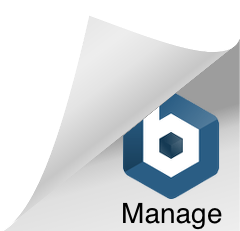
Try as you might, there’s no way to avoid change. In fact, it seems that change is the only constant in life. Instead of resisting change, it’s better that you embrace it and learn how to roll with the punches. Besides, when we make a change in our lives it makes our lives more enjoyable, exciting and fulfilled.
The hardest part about making a change is taking that first step. We can achieve, accept, lean into and profit by change if we will follow these 12 techniques:
1. Select a goal.
What do you do when you’re driving somewhere unfamiliar? You probably put the address in your phone and get step-by-step driving directions. Goals are kind of like your GPS. They provide directions for how to get from Point A to Point B. For example, if you wanted to lose weight, you would first determine how much weight you want to lose, a time frame of when you want to have the weight gone, and what steps you’ll need to take to make this worthy goal a reality.
2. Create a dreamboard.
What dreams and aspirations did you used to have? For me, it was a becoming a professional baseball player. I even used to go outside and visualize that I was the starting right fielder and would toss baseballs in the air and then chase them. It was so easy to dream back then. I was a pitcher for many years and the pressure was tough. I wanted to be in the outfield.
Along the way, having dreams like that disappeared. And, suddenly the possible seemed impossible. The thing is, you can rediscover that magic by creating a dreamboard. It’s essentially the same thing as setting a goal, but it’s a visual representation that can help activate the Law of Attraction (which states that you can program your mindset to actually attract things and situations into your life).
3. Be appreciative.
Not that long ago I was finishing up some work on Saturday night. Once I was all caught up I went through my social accounts. While I was at home working, my “friends” were out to dinner, at a concert, or on a vacation at some exotic location. I’m not gonna lie. I was a little jealous.
That feeling quickly washed away after I sat down and watched a movie with the love of my life. There was no other place I would rather be.
It’s easy to get consumed by all the things that we don’t have or the places we’ve never been. But, instead of getting envious, take an inventory of all the things that you’re appreciative for. It definitely puts everything in perspective when you focus on what you have, as opposed to what you don’t have. Start making a “being grateful” habit.
4. Make lots of choices.
Kurt Carlson, Ph. D., writes that the “only way to realize positive change in your life is by making choices.”
We choose everything from minor daily actions, like what to eat for lunch, to bigger life-changing decisions, like the house that we’re going to purchase. Being aware of these choices can assist you in making a change. Carlson uses an example of a middle-aged man who always takes the elevator instead of the stairs. Once this man realizes that he is choosing to take the elevator he can then begin to look for tricks to help him ultimately pick the stairs. But even with taking the stairs it takes some planning. You have to get to work a few minutes earlier to take the stairs. Deciding to get to work earlier is a change and a choice.
5. Take action.
Sitting around complaining that you gained 10 pounds isn’t going to help you magically lose that weight. You have to take action. Whether it’s joining a gym or trying out a new diet, you’ll never make those changes in your life until you make a choice – just do it.
6. Overcome easy obstacles.
In the scheme of things, losing 10 pounds is easy, as compared to getting over being an introvert. To help you accomplish these smaller goals, you can take simple measures or steps to overcome them.
For example, get the junk food out of the house and stock your kitchen with healthier options like fruits and veggies may be a step that helps you. This way you can have a healthy snack whenever you’re hungry. It’s a small, but important decision, and an action step that can help you with losing weight. Look at your other goals and see what bite size pieces you can take as a step to get where you want to be.
7. Let go of regrets.
We all have regrets in our lives. The problem is that eventually these regrets hold you back from moving forward.
Find a way for yourself to let go of these regrets so that you can stop looking backwards. Whether that’s writing these regrets down on paper and burning them, forgiving yourself for past transgressions, or turning those “shoulds” into goals, you have to let go of regrets before you can go forward. I found advice in a book one time that said when you make a error to do three R’s. Reflect on what you did, then Reboot yourself to do better. Lastly, Reject anymore of the negative thoughts about that regret.
8. Get comfortable in your skin.
Most of us are self-conscious about one of our physical features. The funny thing is, most of that self-consciousness is in our heads. Learn to accept your flaws. If you can’t get past it, then look for ways to rectify the problem. If you feel you’re out of shape, then start working out. If you can’t stand your hair, go to salon and try a new hairstyle. If you’re tired of not getting compliments on your appearance then purchase new clothes and fix yourself up in some way. Be something worth complimenting.
9. Reframe your problems.
I hate to be the bearer of bad news. But, we all have problems. Furthermore, it’s not these problems that are preventing you from enjoying your life or chasing your dreams. It’s using these problems as an excuse or a crutch to not break free from your comfort zone. As Tony Robbins says, “See things as they are but not worse than they are. Your problems are really just invitations to step through fear.”
10. Act like a kid.
As I was leaving the grocery store one day I had the sudden urge to “skate” across the parking lot with the cart. I used to do it all the time as a kid, but never as an adult. Instead of over-analyzing it, I just did it. It was exhilarating. I felt free and didn’t have single care in the world for a long glorious moment. Sometimes we just need to stop acting like an adult and revisit the things that we used to enjoy as children. It’s a great way to put a smile on your face, as well as push aside anxiety and worrying about what others think.
11. Surround yourself with the right people.
The people that you surround yourself with have a major influence on your life. For me personally, I have one friend who is a homebody and prefers to stay-in and watch movies on his incredible home theater system. That’s fine when I just want relax. But, he’s not going to be the person that can challenge me to get out of my shell.
For me to pull myself out of a slump, I turn to another friend who is spontaneous and adventurous. I never know what to expect when we hang out. But, I will say that just by spending time with him I’ve learned how to let go of many things, and I’ve learned to try some new adventures I never would have done without this friend. You can also be that friend for someone else.
12. Keep learning.
Finally, try to learn something new each and everyday. You can keep track of them like I do by blogging. Whether that’s talking to an elder who can give you a first-person history lesson, learning a new guitar chord, or experimenting with a new Japanese dish, learning something new each day helps us grow as a person and makes us more knowledgeable and innovative. My new goal to learn Chinese is not going to happen by itself. I will have to apply all of the above 12 techniques.
At Insightly, we offer a CRM used by small and mid-sized businesses from a variety of verticals. Learn about Insightly’s features and plans on our pricing page or sign up for a free trial.
John Rampton is an entrepreneur, investor, online marketing guru and startup enthusiast. He is founder of the online invoicing company Due. John is best known as an entrepreneur and connector. He was recently named #3 on Top 50 Online Influencers in the World by Entrepreneur Magazine.
is an entrepreneur, investor, online marketing guru and startup enthusiast. He is founder of the online invoicing company Due. John is best known as an entrepreneur and connector. He was recently named #3 on Top 50 Online Influencers in the World by Entrepreneur Magazine.

















 About the author: Joyce Shao is currently a Marketing Intern at Insightly and is pursuing a Business Management Economics major at the University of California, Santa Cruz.
About the author: Joyce Shao is currently a Marketing Intern at Insightly and is pursuing a Business Management Economics major at the University of California, Santa Cruz.

 Adam is the co-founder and CEO of
Adam is the co-founder and CEO of 













